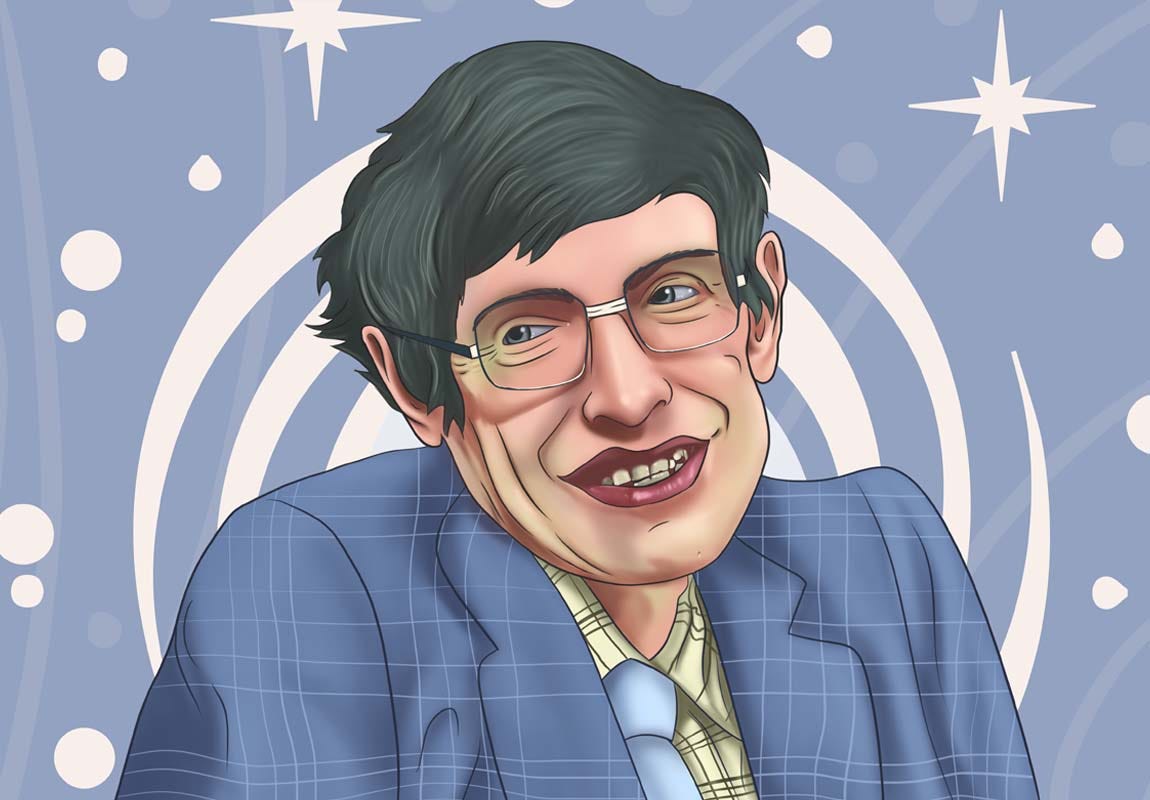Stephen William Hawking was a genius who amazed the world from his wheelchair. After Albert Einstein, Stephen Hawking is arguably the most globally renowned genius in the scientific community. The life and scientific contributions of English theoretical physicist, Stephen Hawking considered revolutionary in his area of study.
It would not be wrong to call Stephen Hawking a superhuman because he is the genius who amazed the whole world by discovering the secrets of the universe, despite being confined to a motorised wheelchair after his whole body was paralyzed for 55 long years. Even though he had lost the ability to move his body and speak, technology that could detect the small twitches of his cheek muscles helped convey the scientific secrets his brilliant mind had uncovered. The life of Hawking, who defeated even his body that was not ready to obey his brain, is still an inspiration to the world today. His mind and thought were dedicated to science and his theories became astonishing revelations to the world.
Man who defied doctors’ predictions
At the age of 21, a young man who had lost muscle strength in his body and whose life expectancy was stated to be two years at the most by his doctors, went on to astonish not only the medical community but also the whole world with his life and contributions till he died at the age of 76. Hawking had been confined to a wheelchair since he was 21 owing to a type of motor neuron disease called amyotrophic lateral sclerosis. It is a disease that is still incurable in medicine. The fact that Stephen Hawking lived the longest of those affected by that disease is just another milestone in his amazing life.
Successor to Einstein?
Hawking, who made unparalleled contributions to theoretical physics, explained many of the mysteries of the universe, including black holes.
Albert Einstein had died when Stephen Hawking was 13 years old. Diseases tried to defeat Hawking many times, but they had to kneel down before his eager desire to know more about the universe. Thus the unique genius of Hawking grew with his self-confidence and effort to fill the position vacated by Einstein.
Hawking was born on January 8, 1942, in Oxford, England. Hawking’s father wanted his son to be a doctor, but Hawking was interested in physics and cosmology.
Hawking graduated in physics from Oxford University and came to Cambridge to do research in cosmology. It was during this time that the motor neuron disease began to affect him, but even as each part of his body slowly began to fail, his mind never failed him and his brain kept on working tirelessly.
Research period
Hawking was adamant that his ailment should never dominate his mind. His study and research helped him eliminate depression and overcome the sympathetic outlook of others.
Hawking received his Ph.D. in 1965 for his research on the characteristics of the expansion of the universe. The dissertation was later published for the public in October 2017 on the Cambridge University website. Within days, the paper was searched by over 2 million people.
During his research, Hawking befriended Roger Penrose, a mathematician at Birkbeck College in London. Hawking’s essays on the singularities and the geometry of space-time, along with Penrose’s conclusions, won the prestigious Adams Prize in 1966. Hawking deeply studied black holes, which are said to form in the last phase of a star’s life. He also studied space-time singularity, first introduced by Albert Einstein’s theory of relativity.
Hawking’s discoveries and theories in the 1970s were topics of discussion, and all of these later led to a major revolution in theoretical physics.
Hawking began to research the Big Bang Theory and black holes. Large giant stars turn into black holes towards the end of their lives. Singularity in Hawking’s theory refers to black holes that shrink infinitely as the surrounding space gets pulled into it, by the extreme force of gravity. Hawking wondered what would happen if this process happened in the reverse direction. He believed that the Big Bang (Big Bang Theory), which led to the origin of the universe, might have evolved and expanded from singularity over time. Penrose was Hawking’s co-researcher in these studies.
Hawking Radiation
In 1973, Hawking published his first academic book, The Large Scale Structure of Space-Time. Hawking’s discoveries and theories in the 1970s were topics of discussion, and all of these later led to a major revolution in theoretical physics. He argued that black holes could not shrink, but could only expand. Based on quantum theory and the theory of relativity, Hawking revealed that radiation emanated from black holes. This later became known as Hawking Radiation.
Hawking won the 1978 Albert Einstein Prize. He held the title of the Lucasian Professor of Mathematics at Cambridge from 1979 to 2009, a title that was previously held by geniuses like Isaac Newton.
Aided by machines
The next setback for Hawking, who continued his research despite his physical difficulties, was the onset of pneumonia in 1985. He lost his voice in those days after undergoing surgery to save his life. With that, Hawking had to seek the help of machines to communicate. Scientists at Cambridge developed motorised wheelchairs and other gadgets for him.
A technology called ‘predictive text’ was used to translate the movements of the cheek muscles into letters, using a sensor attached to Hawking’s glasses. A system had been developed that could translate such writing into sound. Thus, despite the immobility of his body and the loss of speech, Hawking went on to make some amazing discoveries.
Stephen Hawking’s 1988 book, A Brief History of Time, is still one of the bestsellers of all time.
Hawking was willing to not only share new knowledge gained through constant thought and research, but also to correct erroneous theories. Many other researchers, based on quantum theory, had challenged his claim that information trapped inside black holes could disappear permanently. Thus, in 2004, Hawking acknowledged that information could escape from within black holes.
He predicted that human habitation on Earth would be impossible after the next 600 years. Before he died, he told the world that humans must find new bases to live, in space.
Hawking’s books
Stephen Hawking’s 1988 book, A Brief History of Time, is still one of the bestsellers of all time. The book simplifies scientific truths and presents them in a way that is understandable to ordinary people and has helped many people become interested in science. It is also in the Guinness Book of World Records for being on the bestseller list for the longest period.
Hawking authored several books, including Black Holes and Baby Universes, The Universe in a Nutshell, and The Grand Design. In 2013, he wrote an autobiography titled My Brief History.
However, the most talked-about book was by Hawking’s first wife Jane Wilde, Traveling to Infinity: My Life with Stephen. This was made into a movie in 2014.
Wilde and Hawking married in 1965. The couple had three children, including author Lucy Hawking. They divorced in 1995 after 30 years of married life.In 1995, Hawking married Elaine Mason, who was his nurse and speech therapist. Jane married again too. Hawking’s second marriage ended up in divorce after 11 years.
Jane and her husband took care of the lonely Hawking, who remained with his children and grandchildren until his death on March 14, 2018.
Last words
After Hawking’s death, a book he had not completed was published by his family and friends. In this book, Brief Answers to the Big Questions, Hawking states: “There is no God. No one created the universe and no one directs our fate.”
Hawking, who was not a believer in God, also refutes the age-old claim that God had cursed the disabled to be so. He also said that other ways like nature are better to explain everything. His last words are also relevant as to how the future should be structured. The last chapter of the last book says: “Remember to look up at the stars and not down at your feet.”
Now put on your thinking hats and think about the following questions for a couple of minutes.
How would you describe the term “Hawking Radiation” to your students?
What are the most significant contributions of Stephen Hawking in the field of theoretical physics?
Write down your thoughts and discuss them with your students, children and your colleagues. Listen to their views and compare them with your own. As you listen to others, note how similar or different your views are to others’.
Thank you for listening. Subscribe to The Scando Review on thescandoreview.com.
Happy Teaching!













Stephen Hawking: Superhero in Life and Science